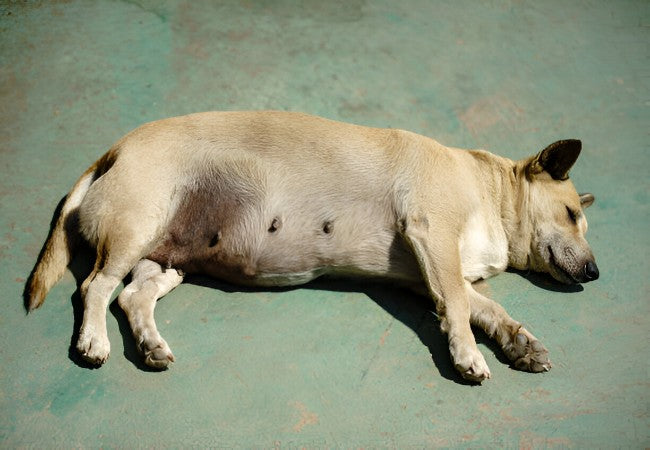Veterinary Guide to Canine Hepatic Arteriovenous Malformations (AVMs) 2025 🐶🩺

In this article
Veterinary Guide to Canine Hepatic Arteriovenous Malformations (AVMs) 2025 🐶🩺
By Dr. Duncan Houston BVSc
🧬 What Is a Hepatic AVM?
A hepatic arteriovenous malformation (AVM) or fistula occurs when high-pressure arteries directly connect to low-pressure portal veins in the liver, bypassing the capillaries. The result is turbulent flow, portal hypertension, ascites, and often acquired portosystemic shunts.
Causation: Congenital vs Acquired
- Congenital AVMs are developmental vascular malformations—often multiple communications between hepatic artery and portal vein branches. Dogs may present young with signs of liver dysfunction.
- Acquired fistulas result from liver trauma, biopsies, or develop within tumors—less common but still significant.
👥 Who’s Affected?
- Any breed or age—congenital AVMs reported in young dogs.
- Acquired cases follow trauma or neoplastic processes, generally in adults.
⚠️ Clinical Signs
- Abdominal distension/ascites due to portal hypertension.
- Signs of hepatic encephalopathy—lethargy, disorientation, seizures—as toxins bypass liver filtration.
- Gastrointestinal symptoms—vomiting or diarrhea, possibly with blood.
- A liver bruit or murmur—turbulent intraparenchymal flow.
🔍 Diagnostic Approach
- Physical exam & labwork: CBC/chem may show elevated liver enzymes, hypoalbuminemia, coagulopathy. Schistocytes may appear on blood smear.
- Ultrasound with Doppler: Detects arterialized portal flow, turbulent intrahepatic channels.
- CT/angiography: Gold standard to detail nidus, feeding/draining vessels.
- Liver biopsy or FNA: Confirm histopathology—evaluate fibrosis, inflammation, or tumor presence.
- Contrast studies: Portal pressure measurement and imaging for acquired shunts.
🛠️ Treatment Options
1. Interventional Radiology (Embolization)
- Catheter-based embolization of nidus is minimally invasive—reduces shunting.
- Materials: coils, vascular plugs to occlude abnormal channels.
- Requires advanced imaging and specialist care.
2. Surgical Management
- Direct ligation or vessel resection—possible in select, well-localized cases.
- Surgical risk high; multifocal congenital AVMs often not fully operable.
3. Medical/Supportive Care
- Manage ascites with low-sodium diets and diuretics.
- Address hepatic encephalopathy: lactulose, antibiotics (neomycin/metronidazole), protein restriction.
- Manage coagulopathy with vitamin K, transfusions if needed.
📈 Prognosis
- Guarded if untreated—complications from portal hypertension and HE are serious.
- Better outcomes with successful embolization or surgical correction—minimized portal pressures.
- Congenital multifocal AVMs harder to correct and more likely to require long-term supportive care.
📱 Ask A Vet Telehealth Support
- 📸 Upload ultrasound or CT images and labs for specialist interpretation.
- 🔔 Treatment reminders—for embolization prep, diet, meds, follow-up imaging.
- 🩺 Virtual check-ins to assess ascites, neurologic signs, and quality of life.
🎓 Case Spotlight: “Cookie” the French Bulldog
Cookie presented with abdominal fluid, poor energy, and diarrhea. Ultrasound revealed turbulent flow; CT confirmed congenital intrahepatic AVM. Interventional embolization was performed. Ask A Vet coordinated imaging transfer, post-op follow-ups, diuretic management, and diet. One year later, ascites resolved, and Cookie has returned to playful behavior 🐾.
🔚 Key Takeaways
- Hepatic AVMs are rare vascular anomalies that cause portal hypertension and encephalopathy.
- Diagnosis requires Doppler ultrasound and CT angiography; biopsy confirms tissue changes.
- Interventional embolization offers the best chance for correction; surgery or supportive care follows.
- Without intervention, the prognosis is guarded; treated dogs may enjoy good quality of life.
- Ask A Vet telehealth helps with diagnostics, treatment coordination, follow-up, and home care monitoring 📲🐾
Dr Duncan Houston BVSc, founder of Ask A Vet. Download the Ask A Vet app for expert telehealth: imaging review, interventional planning, embolization coordination, post-treatment monitoring, and ongoing support for dogs with hepatic vascular anomalies 🐶📲






